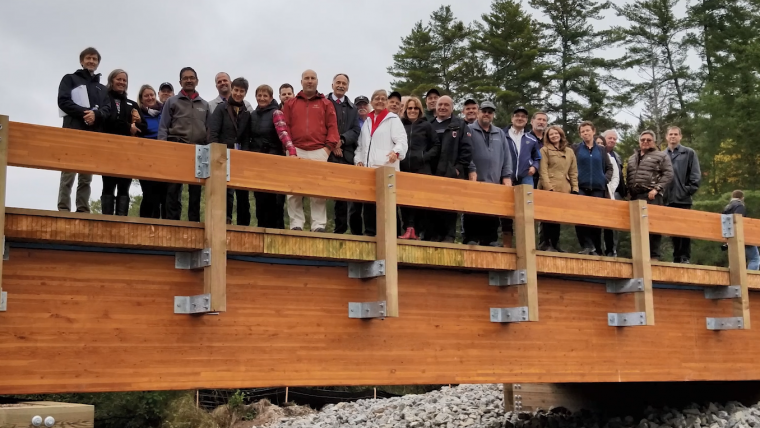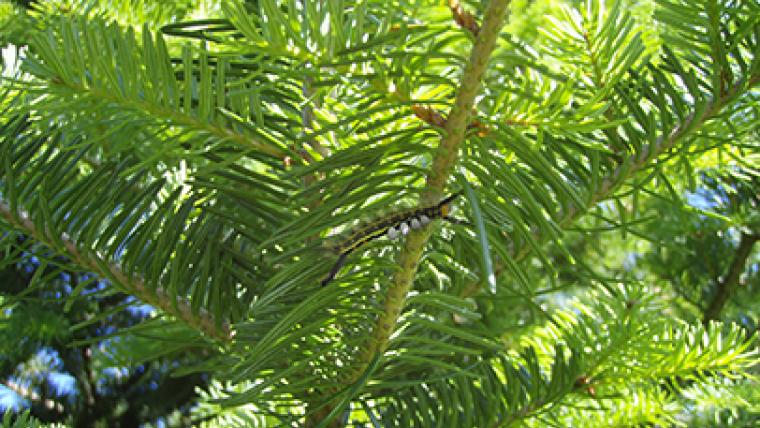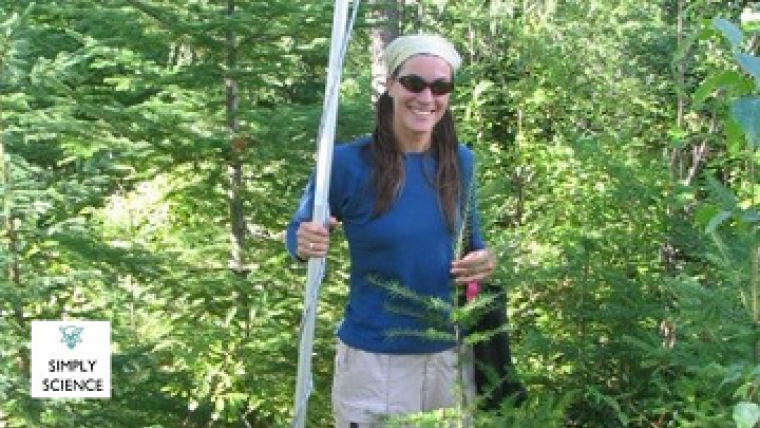Saving Our Ash Trees (Natural Elements)
For the past two decades, ash trees have been under attack by a tiny, yet formidable foe – the emerald ash borer. This invasive pest has already killed tens of millions of ash trees and shows no signs of letting up. On this episode, we are speaking with an expert that is conserving ash seeds for future restoration activities.
Transcript
- Lisa Edwards (Host): Ash trees are an important part of our Canadian identity. They’re a fixture in our urban and rural landscapes. And their wood is used for many common items such as furniture, electric guitars and hockey sticks — it doesn’t get much more Canadian than that! And Indigenous communities have been using ash wood for weaving baskets for generations.
- But for the past two decades, ash trees have been under attack. A tiny yet formidable foe — the emerald ash borer — has already killed tens of millions of ash trees, and it’s going to threaten our trees for the foreseeable future.
- How can we fight back? By using science!
- We’ll find out how on this episode of Natural Elements.
- Music intro
- This is Natural Elements, and I’m your host, Lisa Edwards.
- Natural Elements is a podcast series brought to you by Simply Science, which is Natural Resources Canada’s online magazine. We talk to our experts about the work they do and how it relates to the world around us. We’ll give you a taste of the topic and let you know where you can find more information.
- Let’s get to today’s topic — the emerald ash borer.
- The war against the effects of this tiny insect is taking place on multiple fronts. One area of importance is conserving ash seeds for future restoration activities.
- To learn more about this process, we reached out to one of our experts at the National Tree Seed Centre in Fredericton, New Brunswick:
- Donnie McPhee: My name is Donnie McPhee, and I work for the National Tree Seed Centre of Canada. Our main purpose is to collect, process, test and store seeds from Canadian trees and shrubs for conservation and research purposes. My role as the coordinator really is to foster relationships with other organizations — so, Parks Canada, Environment Canada, Indigenous Affairs — but also with forestry services in every province and territory in Canada and other seed centres. We also work and collaborate with the forest industry, Indigenous groups and a lot of the different conservation NGOs and universities across the country. As a coordinator, I’m trying to bring everyone interested in seed conservation or anyone doing research with seeds or needing seeds, trying to bring everyone together.
- Lisa Edwards: As Donnie points out, this battle is an all-hands-on-deck effort. That’s because the effects of the emerald ash borer are so significant and are being felt across much of the country.
- Donnie McPhee: I guess it depends on what part of the country you're in, but emerald ash borer is affecting the ash forest from Ontario right across Nova Scotia. When the emerald ash borer came in, it was first seen in Windsor, Ontario, in 2002, and it was slowly moving across Ontario and Quebec. But in the last couple of years, it made a big jump all the way to Edmonston, New Brunswick, and then to Fredericton the next year, then Bedford, Nova Scotia. Really, the only provinces that are not suffering the effects of the emerald ash borer right now are Prince Edward Island and Newfoundland, but that's coming. The emerald ash borer destroys all ash trees. There is no known resistance in any ash trees at this current time. So, as time goes on, there’s a high chance that we are going to lose a very high percentage of our ash trees. It’s these trees that a lot of cities you're walking through, in your downtown core, you see planted ash trees in most cities in Canada. And that's all the way from Edmonton right through to St. John's, Newfoundland — it's ash trees that are planted, white ash in particular. Those cities are really struggling here. In a city the size of Frederick alone, there's thousands of ash trees planted along the city streets, which are going to die. So it's a big concern.
- Lisa Edwards: One approach to fighting off the tenacious emerald ash borer is to collect and store seeds from a wide variety of ash trees to help preserve genetic diversity. These efforts are an essential part of a long-term approach to preserving our ash trees. Here’s why:
- Donnie McPhee: The premise for seed conservation for almost any species is that eventually nature works things out. We’re here for a very short time period. But most species have undergone some type of insect disease problem throughout the millennium. So the idea with conservation is that we want to have seeds stored representing the genetic diversity of species until such a time that nature kind of works itself out, at an equilibrium between the problematic agent — in this case, the emerald ash borer — and the species of interest, which in this case are ash trees. And that normally happens as fewer and fewer ash trees exist in a given area, the population of emerald ash borer will decrease and an equilibrium will happen.
- So when this happens, we want to have the genetic diversity of the species in conservation so that we can go back out and start re-establishing the genetic diversity of the species back on the landscape from where it was collected. That's why it's really important that we collect seed representing geographical and ecological jurisdictions in the country, so we can go back and plant seeds from those areas that were collected from those areas. Black ash seeds collected in the Margaree Valley of Cape Breton is extremely different from the seed collected from the Ottawa Valley. So we want to have seed collected from each of those regions so we can plant the seeds from Margaree Valley back into that region, seeds collected from Fredericton back there and so on across the board. The other aspect is that there is always advances in technology. In time, it's really hopeful that a vaccine might be developed so that we can vaccinate seed and seedlings rendering them immune to emerald ash borer, and then those seedlings can be planted back on the landscape as well.
- Lisa Edwards: Until a vaccine is developed, scientists continue to learn more about conserving seeds. Quality is key. Donnie explains how to maximize the long-term viability of seeds:
- Donnie McPhee: Collecting and storing ash seed is very similar to almost all other seeds. First of all: junk in, junk out. You need to have high-quality, good seed. Once the seed is collected, it has to be cleaned and dried down. Ash seed stores very well if it's dried down to between five and seven percent moisture or below 0.5 ERH — and that's equilibrium relative to humidity; it's just basically the amount of moisture in the seed compared to the environment surrounding it. But if you dry it down, it can actually be stored at minus 20 degrees Celsius. And we have collections collected twenty five years ago that are still at 86 percent. When they were stored originally 25 years ago, they were 90 percent viable. So 90 percent of the seed germinated into healthy individuals. Well, twenty-five years later, 86 percent of those seeds are still viable and producing seeds. We have other species in storage for over 60 years that are doing the same. We didn't start collecting ash until twenty-five years ago. So we don't have data going farther back than that.
- Lisa Edwards: Although ash trees appear to produce seeds every year, not all of those seeds are viable.
- Donnie McPhee: Black and blue ash only produce viable seed every five to seven years, and that really tricks the public's eye. White ash is every five years; green ash is almost every year. But a lot of black ash or white ash, you'll look at a tree every year and they will have seeds and you'll think, “Oh, it's healthy seed.” But basically what happens is a female tree — and ash trees have male and female trees — a female tree will produce flowers. If they don't get pollinated by a male tree, they still form the seed but there's nothing in it. It's just an empty seed that was never pollinated. It looks very healthy up on the tree until all of a sudden, in mid August when the weather gets hot, everyone sees the seed going brown and they go, “Oh, they're ripening early.” But really there's nothing in them, and they fall off the tree. For black ash, it grows in a very harsh environment, a very swampy kind of wet. The reason it only produces seed every five to seven years is because it takes that long for it to gain the energy and the nutrients needed to produce viable healthy seed. A lot of resource goes into making seeds.
- Lisa Edwards: Collecting seeds from a wide variety of trees is a good idea for many reasons. Genetic diversity is vitally important. There are different species of ash trees, and each of them is important for different reasons.
- Donnie McPhee: Most people have heard about black ash. It's very important to our First Nations communities, a lot of cultural significance. It's used in a lot of art, basket making and weaving, and different things like that. So everybody is very familiar with it. White ash, everyone is familiar with it because it's on your city street. That's what cities plant. All along the street. Green ash, not many people know about it because it exists on river banks and wet areas, but ecologically green ash is probably the most important because it's what's holding our river banks together, our floodplains together in many places. It's not as pretty a tree. It's very branchy, so cities don't like it. It's pretty messy again because it produces seed every year. You've got a tree dropping hundreds of thousands of seed on your city streets every year. It's a mess. So that's another reason why they don't like planting.
- Lisa Edwards: If you’re interested, you can get involved and help conserve our ash trees. Donnie tells us how:
- Donnie McPhee: The first thing that any willing collaborator can do is to become informed. Seed collecting is all about collecting from best situated trees from the best locations and at the right time. So junk in, junk out. For people just to go out and start collecting seed, that doesn't really help us out unless we know it's good quality. The first thing a person could do if they see ash trees in seed — and again, we only collect from natural sand, so not from city streets, not from city parks, not from your front lawn that someone planted. You have no idea where that seed came from. We want a natural population. But if they have that, what they want to do is go type in” National Tree Seed Centre of Canada.” They'll find our web page; there's a tab with ash conservation. If they hit, that they'll see — links that'll tell them how to identify ash trees and the different ash trees, where they're going to find them, when to collect seed, how to tell if the seed is a good quality. And if they do all this and the seed is good quality, if they can't make collections themselves, they can always contact us, and we'll do our best to coordinate with our collaborators and make sure someone gets out there to make those collections. There's also a map that was just produced today, an updated map that will highlight where the priority areas are in Canada for each species for collecting. So these are areas that we currently have nothing in our conservation collection for and we're really hoping to get them this year.
- Lisa Edwards: To learn more about the emerald ash borer or the National Tree Seed Centre, check out the links in the episode description.
- National Tree Seed Centre – https://natural-resources.canada.ca/science-data/research-centres-labs/forestry-research-centres/atlantic-forestry-centre/national-tree-seed-centre/13449
- Fighting the emerald ash borer with science – https://natural-resources.canada.ca/simply-science/21144
- Seeds that Succeed – https://natural-resources.canada.ca/simply-science/20730
- Don’t miss future episodes of Natural Elements or its sister podcast AskNRCan — subscribe to the Simply Science podcast channel.
- And to learn more about the fascinating scientific work that we do at Natural Resources Canada, check out our Simply Science website for in-depth articles, and also our Simply Science YouTube channel to see our experts at work. You can find the links in the episode description as well.
- Thank you, everyone, for listening! We’ll see you next month with a brand new episode.
Find out more:
- National Tree Seed Centre
- Other related products on Simply Science:
- Simply Science
- Simply Science YouTube Channel
Page details
- Date modified:




